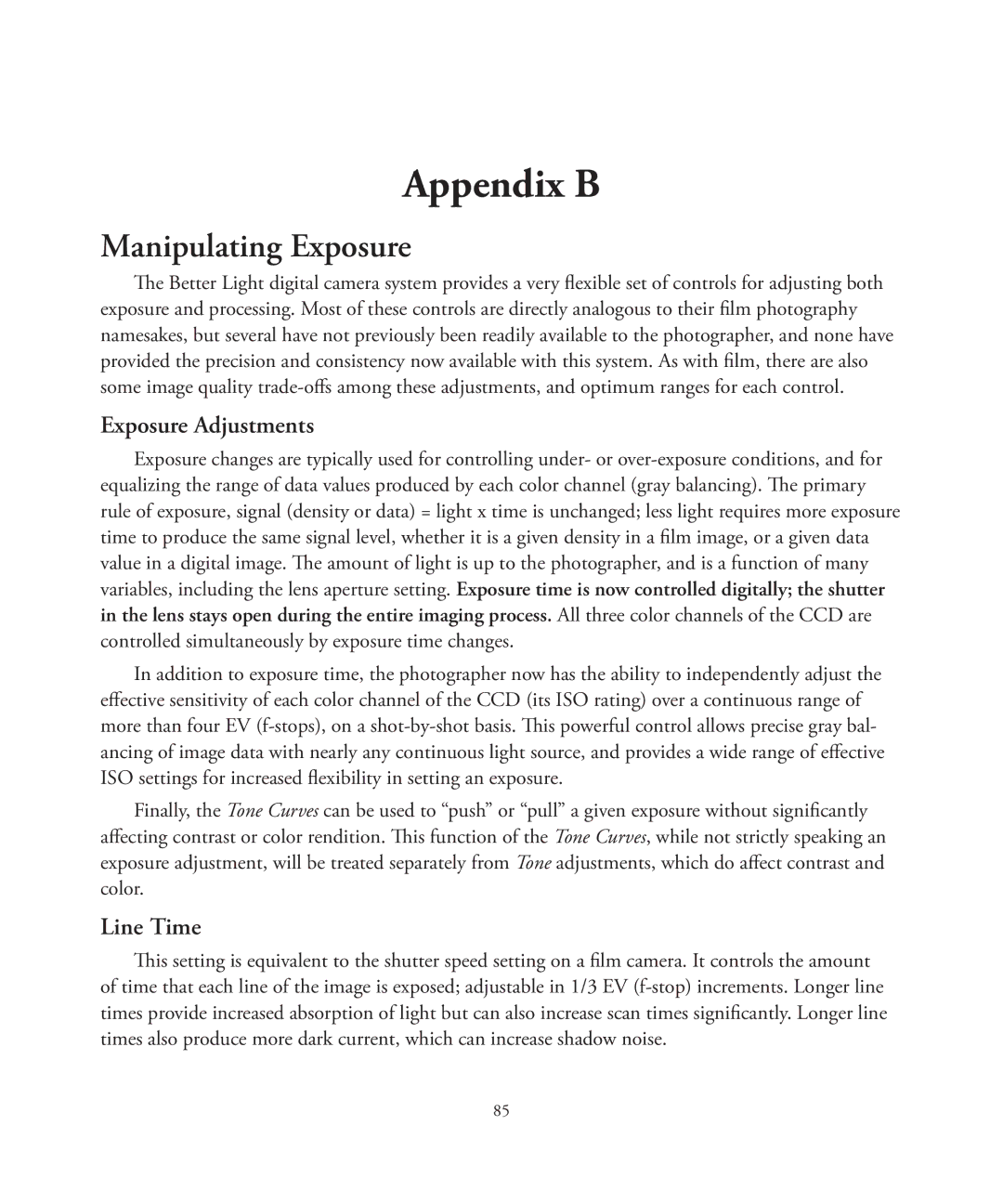Appendix B
Manipulating Exposure
The Better Light digital camera system provides a very flexible set of controls for adjusting both exposure and processing. Most of these controls are directly analogous to their film photography namesakes, but several have not previously been readily available to the photographer, and none have provided the precision and consistency now available with this system. As with film, there are also some image quality
Exposure Adjustments
Exposure changes are typically used for controlling under- or
In addition to exposure time, the photographer now has the ability to independently adjust the effective sensitivity of each color channel of the CCD (its ISO rating) over a continuous range of more than four EV
Finally, the Tone Curves can be used to “push” or “pull” a given exposure without significantly affecting contrast or color rendition. This function of the Tone Curves, while not strictly speaking an exposure adjustment, will be treated separately from Tone adjustments, which do affect contrast and color.
Line Time
This setting is equivalent to the shutter speed setting on a film camera. It controls the amount of time that each line of the image is exposed; adjustable in 1/3 EV
85
